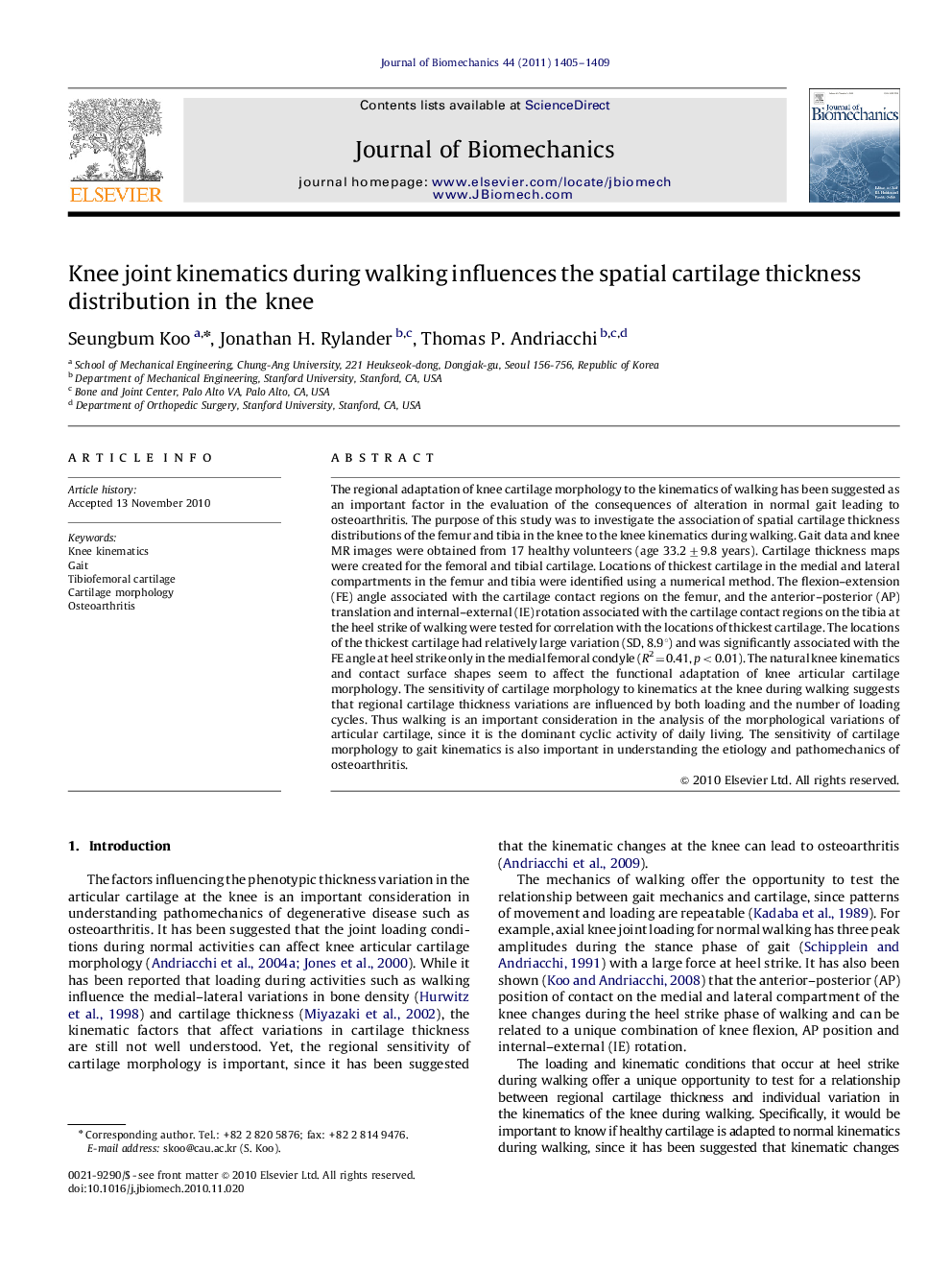| Article ID | Journal | Published Year | Pages | File Type |
|---|---|---|---|---|
| 873098 | Journal of Biomechanics | 2011 | 5 Pages |
The regional adaptation of knee cartilage morphology to the kinematics of walking has been suggested as an important factor in the evaluation of the consequences of alteration in normal gait leading to osteoarthritis. The purpose of this study was to investigate the association of spatial cartilage thickness distributions of the femur and tibia in the knee to the knee kinematics during walking. Gait data and knee MR images were obtained from 17 healthy volunteers (age 33.2±9.8 years). Cartilage thickness maps were created for the femoral and tibial cartilage. Locations of thickest cartilage in the medial and lateral compartments in the femur and tibia were identified using a numerical method. The flexion–extension (FE) angle associated with the cartilage contact regions on the femur, and the anterior–posterior (AP) translation and internal–external (IE) rotation associated with the cartilage contact regions on the tibia at the heel strike of walking were tested for correlation with the locations of thickest cartilage. The locations of the thickest cartilage had relatively large variation (SD, 8.9°) and was significantly associated with the FE angle at heel strike only in the medial femoral condyle (R2=0.41, p<0.01). The natural knee kinematics and contact surface shapes seem to affect the functional adaptation of knee articular cartilage morphology. The sensitivity of cartilage morphology to kinematics at the knee during walking suggests that regional cartilage thickness variations are influenced by both loading and the number of loading cycles. Thus walking is an important consideration in the analysis of the morphological variations of articular cartilage, since it is the dominant cyclic activity of daily living. The sensitivity of cartilage morphology to gait kinematics is also important in understanding the etiology and pathomechanics of osteoarthritis.
